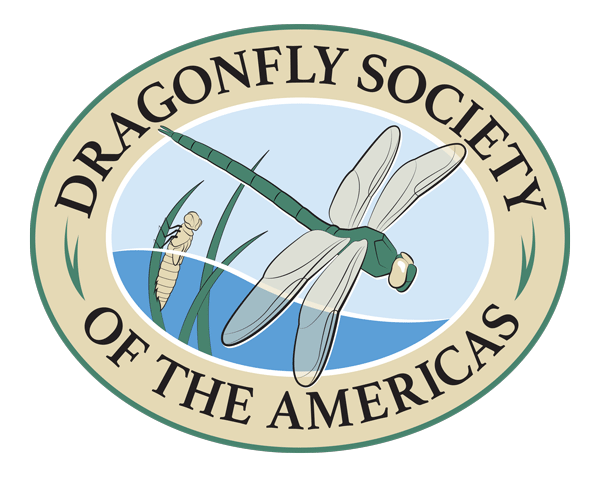DSA Collecting Guidelines
A final draft of the DSA Collecting Guidelines has been completed through the diligent work of a Committee set up by George Harp, chaired by Richard Orr, and with the valuable comments of many of our members. This was also published in ARGIA (1994, vol. 6, no. 3, pp. 6-8), but has a few significant changes.
Preamble
Our ethical responsibility to assess and preserve natural resources, for the maintenance of biological diversity in perpetuity, and for the increase of knowledge requires that odonatologists examine the rationale and practices of collecting Odonata, for the purpose of governing their own activities. While we recognize that historically most threats to preservation of odonate species have been a consequence of habitat destruction, we believe that there is a need for responsible collecting practices. To this end, the following guidelines are outlined, based on these premises:
0.1 Odonata are a natural resource.
0.2 Any human interaction with a natural resource (e.g. Odonata and their environment) should be in a manner not harmful to the perpetuation of that resource.
0.3 The collection of Odonata:
0.31 is a means of introducing children and adults to awareness and study of their natural environment;
0.32 has an essential role in gathering of scientific information including the advancement of taxonomic knowledge, both for its own sake and as a basis from which to develop rational means for protecting the environment, and maintaining the health of the biosphere;
0.33 is an enjoyable educational or scientific activity which can generally be pursued in a manner not detrimental to the resource (e.g. Odonata and their environment) involved.
Guidelines
Purposes of Collecting (consistent with the above)
1.1 To create a reference collection for study and appreciation.
1.2 To document regional diversity, frequency and variability of species, and as voucher material for published records.
1.3 To document faunal representation in environments undergoing or threatened with alteration by human or natural forces.
1.4 To participate in development of regional checklists and institutional reference collections.
1.5 To complement a planned research endeavor.
1.6 To aid in dissemination of educational information.
1.7 To provide material for taxonomic studies.
1.8 To provide information for ecological studies.
Restraints As To Numbers
2.1 Collection (of adults or of immature stages) should be limited to sampling, not depleting, the population concerned; numbers collected should be consistent with, and not excessive for, the purpose of the collecting.
2.2 When collecting where the extent and/or fragility of the population is unknown, caution and restraint should be exercised.
Collecting Methods
3.1 Field collecting should be selective and should minimize harm to non-target organisms.
Live Material
4.1 Rearing to elucidate life histories and to obtain series of immature stages and adults is encouraged, provided that collection of the rearing stock is in keeping with the guidelines.
4.2 Reared material in excess of need should be released, but only in the region where it originated, and in suitable habitat.
4.3 Because of such concerns as introduction of disease and adverse redistribution of genetic resources, release of excess reared material is not encouraged unless it is done in conjunction with a planned restoration program, and under supervision of knowledgeable biologists.
Environmental and Legal Considerations
5.1 Protecting the supporting habitat must be recognized as essential to the protection of a species.
5.2 Collecting should be performed in a manner such as to minimize trampling or other damage to the habitat.
5.3 Property rights and sensibilities of others must be respected (including those of nature photographers and observers).
5.4 All collecting must be in compliance with regulations relating to public lands (such as state and national parks, monuments, recreational areas, etc.) and to individual species and habitats.
5.5 Importation and movement of exotic species must be in compliance with international, national, or regional laws prior to importing live or dead material.
Responsibility For Collected Material
6.1 All material should be preserved with full data attached, including parentage of immatures when known.
6.2 All material should be protected from physical damage and deterioration, as by light, molds, and museum pests.
6.3 Collections should be made available for examination by qualified researchers.
6.4 Collections or specimens, and their associated written, electronic, photographic and other records, should be willed or offered to the care of an appropriate scientific institution, if the collector lacks space or loses interest, or anticipates death.
6.5 Type specimens, especially holotypes or allotypes, should be deposited in appropriate institutions.
Related Activities Of Collectors
7.1 Collecting should include permanently recorded field notes regarding habitat, conditions, and other pertinent information.
7.2 Recording of observations of behavior and of biological interactions should be encouraged and receive as high a priority as collecting.
7.3 Photographic records, with full data, are also encouraged.
7.4 Education of the public about collecting and conservation, as reciprocally beneficial activities, should be undertaken whenever possible.
Traffic In Odonata Specimens
8.1 Collections of specimens for exchange should be performed in accordance with these guidelines.
8.2 Rearing of specimens for exchange should be from stock obtained in a manner consistent with these guidelines, and so documented.
8.3 The sale of individual specimens or the mass collection of Odonata for commercial purposes (e.g. fish bait), and collection or use of specimens for creation of salable artifacts, are not included among the purposes of the Dragonfly Society of the Americas.
